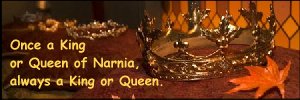I'm not sure what you mean by "hatters hatting" as a masculine activity - women wore hats those days a good deal more so than today, especially in England and especially in polite society.
If I remember correctly, there is a distinction between hatters and milliners. Hatters made men's hats, while milliners made women's hats. During Queen Victoria's reign, most women who worked worked part time to supplement the family income, and my understanding is that the majority of the work they did was often of the domestic type, or would do short sprints at factories, such as the millinery you mentioned. A hatter, again, if I remember correctly, was more of a shop owner where he did most if not all his own work, and was not factory driven, like women's millinery. (Any other history buffs care to weigh in on this? I'm forgetting all the things that made hatters special.
I remember being taught that hatters did often go mad from the chemicals used in hat making. Wikipedia explanation:Mad as a hatter
Although the name "Mad Hatter" was clearly inspired by the phrase "as mad as a hatter", there is some uncertainty as to the origins of this phrase. Mercury was used in the process of curing felt used in some hats, making it impossible for hatters to avoid inhaling the mercury fumes given off during the hat making process; hatters and mill workers thus often suffered mad hatter disease, mercury poisoning causing neurological damage including confused speech and distorted vision. Hat making was the main trade in Stockport, near where Carroll grew up, and it was not unusual then for hatters to appear disturbed or confused; many died early as a result of mercury poisoning. However, the Hatter does not exhibit the symptoms of mercury poisoning, which include "excessive timidity, diffidence, increasing shyness, loss of self-confidence, anxiety, and a desire to remain unobserved and unobtrusive
There, shining in the sunrise, larger than they had seen him before, shaking his mane (for it had apparently grown again) stood Aslan himself.
"...when a willing victim who had committed no treachery was killed in a traitor's stead, the Table would crack and Death itself would start working backwards."
I think the word "Uglified" used in The Voyage of The Dawn Treader was likely inspired by the word "Uglification" from Alice's Adventures in Wonderland.
Movie Aristotle, AKA Risto
That sounds likely to me, Movie Aristotle.  Nice catch.
Nice catch.
Coracle, that's terrible! I'd never heard anything about the history behind the Mad Hatter concept, nor the difference between hatters and milliners, let alone the depressing bit about the symptoms of mercury poisoning. *shudders* Thanks for sharing, I suppose? (It was certainly interesting! The things you learn on NarniaWeb.)
I like Varnafinde's comment about the influence of Edith Nesbitt's writing - apparently I should read at least one of her books some time. Now I'm curious to see if the exclamations sound similar to me, too.
"In the end, there is something to which we say: 'This I must do.'"
- Gordon T. Smith
avi by Flambeau
I never heard he was. That's very interesting. I can see a parallel between Alice and Lucy. Narnia is a lot better though.
I like Varnafinde's comment about the influence of Edith Nesbitt's writing - apparently I should read at least one of her books some time. Now I'm curious to see if the exclamations sound similar to me, too.
Some of her books even use the concept of events in a different world not taking up any of our time. The House of Arden (from 1908) and Harding's Luck (from 1909) , especially the latter, are good examples of this. I guess they are out of print now, but they are available for reading on the net.

(avi artwork by Henning Janssen)
We've just changed the title of this thread from "Quest: Was Lewis Influenced by Alice In Wonderland?"
There, shining in the sunrise, larger than they had seen him before, shaking his mane (for it had apparently grown again) stood Aslan himself.
"...when a willing victim who had committed no treachery was killed in a traitor's stead, the Table would crack and Death itself would start working backwards."
I was looking at some Alice in Wonderland stuff the other day when I realized that Alice and Lucy are quite close in age. Alice gives her age as 7 and 1/2, while Lucy is about 8 when she first enters Narnia. I find this age interesting, as it seems to put them on the cusp between being so young as to believe most anything and being old enough to regard adventures through portals as "weird" and "impossible" (says the Doctor Who fan). There are probably a lot of incidental similarities between the two girls, but I hadn't realized their ages until recently.
In other news, I'm still pondering hats and clothes. In Looking Glass, Carroll has Alice complaining of how heavy the crowns are. Of course, that does point out that popular versions (which all feature very, very small crowns that are easily knocked about) are incorrect. Given the historical time period, of course, heavy crowns were the thing;but as we discussed previously, quite a lot of Carroll's writing was either critiquing, making fun of, or otherwise commenting on political and social systems.
I wonder if Lewis would disapprove of such heavy crowns.
Avatar thanks to AITB
